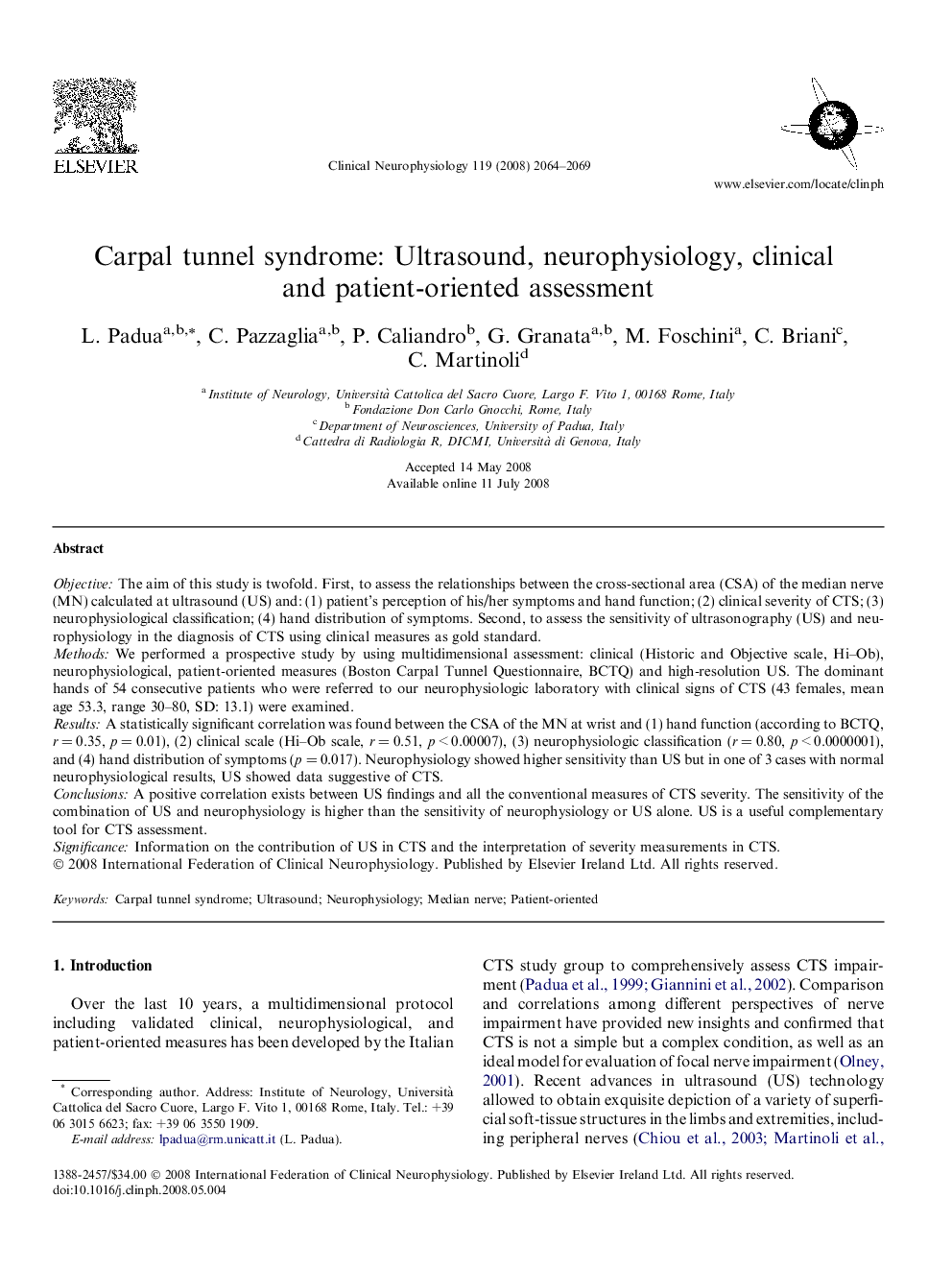| Article ID | Journal | Published Year | Pages | File Type |
|---|---|---|---|---|
| 3046913 | Clinical Neurophysiology | 2008 | 6 Pages |
ObjectiveThe aim of this study is twofold. First, to assess the relationships between the cross-sectional area (CSA) of the median nerve (MN) calculated at ultrasound (US) and: (1) patient’s perception of his/her symptoms and hand function; (2) clinical severity of CTS; (3) neurophysiological classification; (4) hand distribution of symptoms. Second, to assess the sensitivity of ultrasonography (US) and neurophysiology in the diagnosis of CTS using clinical measures as gold standard.MethodsWe performed a prospective study by using multidimensional assessment: clinical (Historic and Objective scale, Hi–Ob), neurophysiological, patient-oriented measures (Boston Carpal Tunnel Questionnaire, BCTQ) and high-resolution US. The dominant hands of 54 consecutive patients who were referred to our neurophysiologic laboratory with clinical signs of CTS (43 females, mean age 53.3, range 30–80, SD: 13.1) were examined.ResultsA statistically significant correlation was found between the CSA of the MN at wrist and (1) hand function (according to BCTQ, r = 0.35, p = 0.01), (2) clinical scale (Hi–Ob scale, r = 0.51, p < 0.00007), (3) neurophysiologic classification (r = 0.80, p < 0.0000001), and (4) hand distribution of symptoms (p = 0.017). Neurophysiology showed higher sensitivity than US but in one of 3 cases with normal neurophysiological results, US showed data suggestive of CTS.ConclusionsA positive correlation exists between US findings and all the conventional measures of CTS severity. The sensitivity of the combination of US and neurophysiology is higher than the sensitivity of neurophysiology or US alone. US is a useful complementary tool for CTS assessment.SignificanceInformation on the contribution of US in CTS and the interpretation of severity measurements in CTS.
